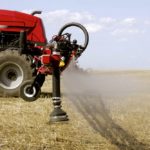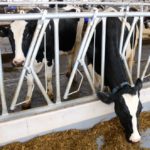Tag Archives OMAFRA

Managing corn mycotoxins needs scouting, hybrid choice
Farmer can reduce risk of mycotoxins, including through insect and spore management

Hardeman looks for ways to reduce barriers to agriculture growth
The new Ontario agriculture minister supports a continued review of business risk management programs

Looking for answers on sulphur
OMAFRA is looking for co-operators to further knowledge on sulphur needs in corn and soybeans

Quality first cut, not a lot of second cut
The Ontario Forage Council’s Forage Expo gave farmers a chance to check out almost 40 pieces of equipment

Edible beans and the soybean cyst nematode
Some varieties of edible beans are highly susceptible to SCN — Ontario researchers are working to figure out why

Taking the dicamba cleanse
Experts remind growers to take an active approach to sprayer cleaning, and of the importance of ammonia in removing dicamba residues

Kicking the antimicrobial habit
Farmers have already lost ability to use antimicrobials for growth enhancement; tighter purchasing restrictions are next

Why cull dairy cows are discounted
The price paid for cows with poor body condition score is dropped 20 cents per kg, meaning there may be opportunities to dry off and feed those cows

Province lays out soil health strategy
Measures aim to improve soil health over the next decade

How can hay compete with corn, soy and wheat?
Applying more intensive management, especially fertilizer, can bump hay yields
